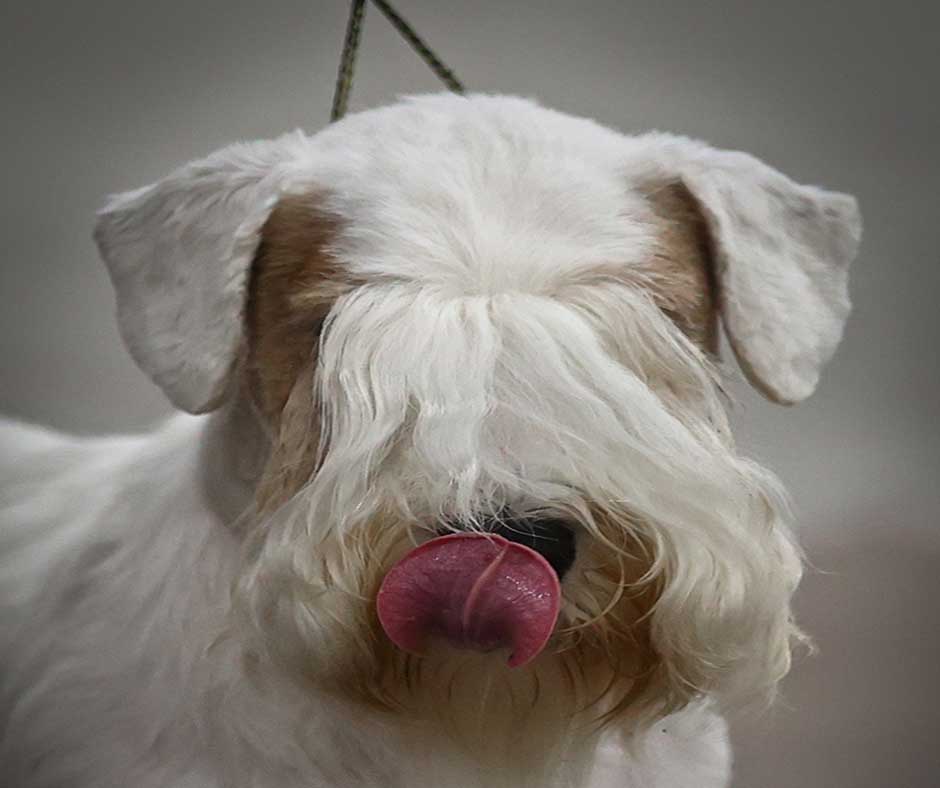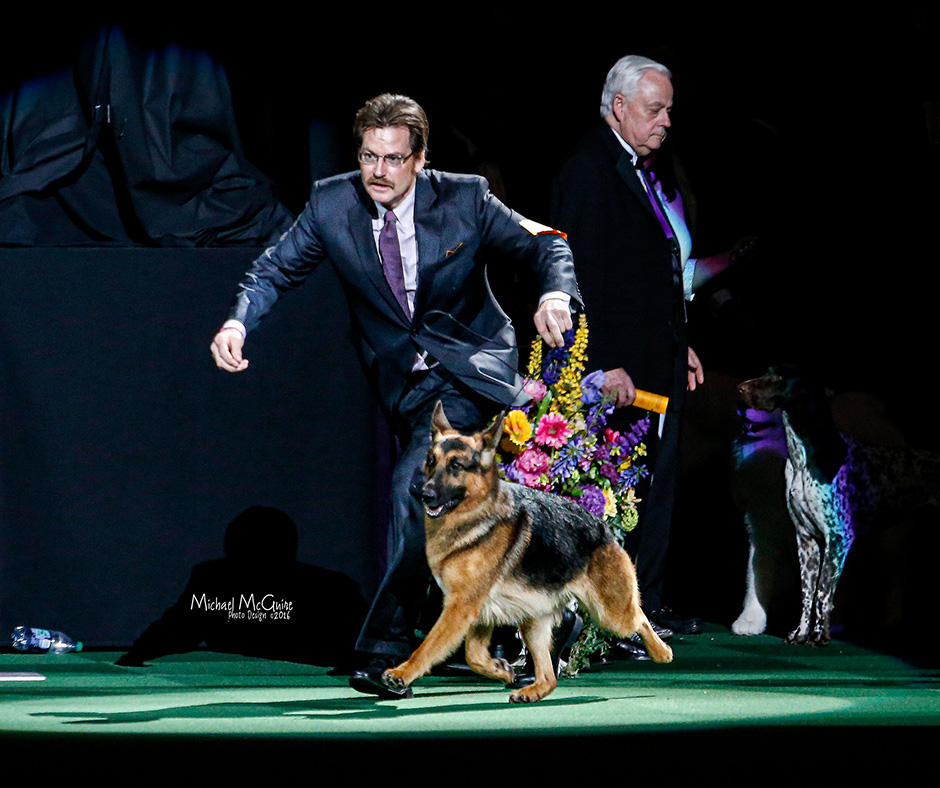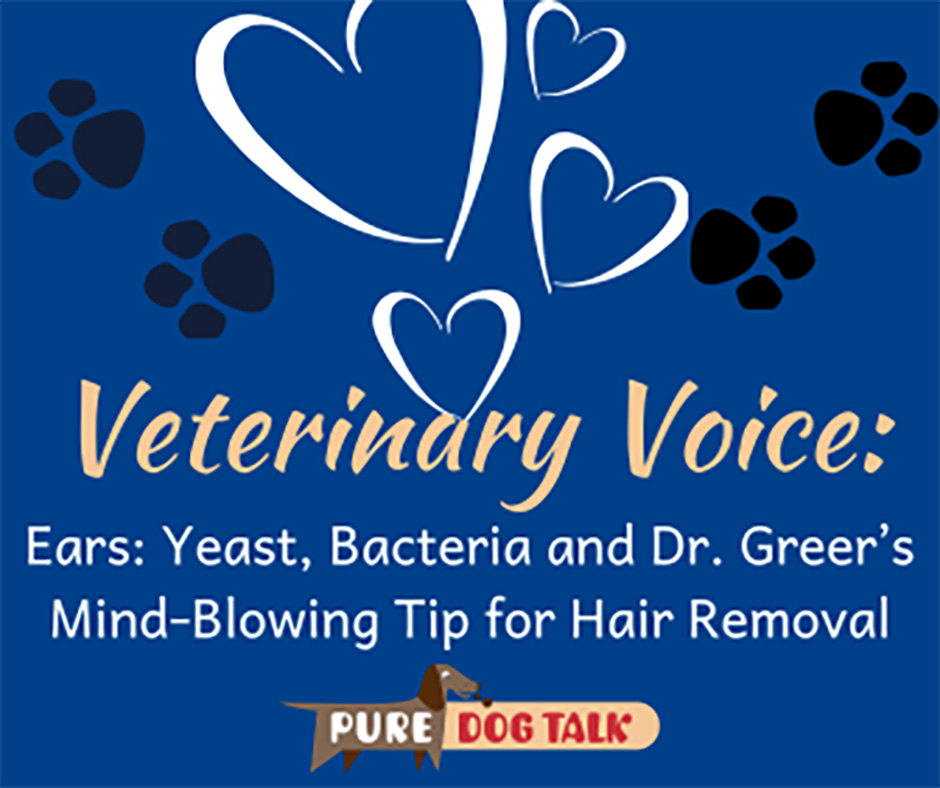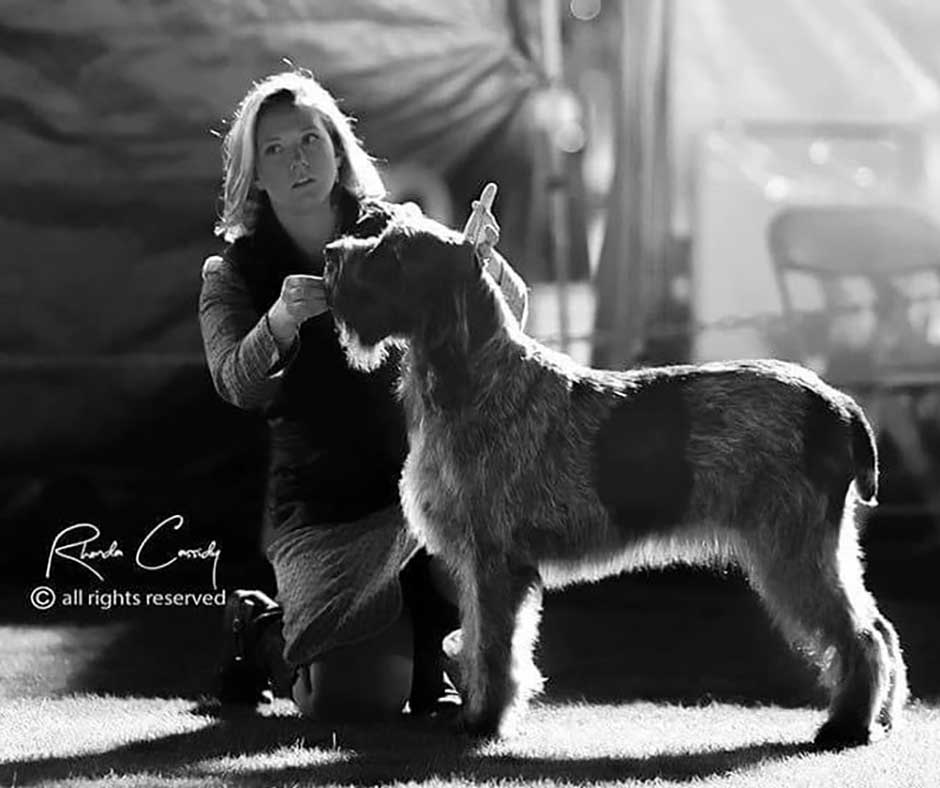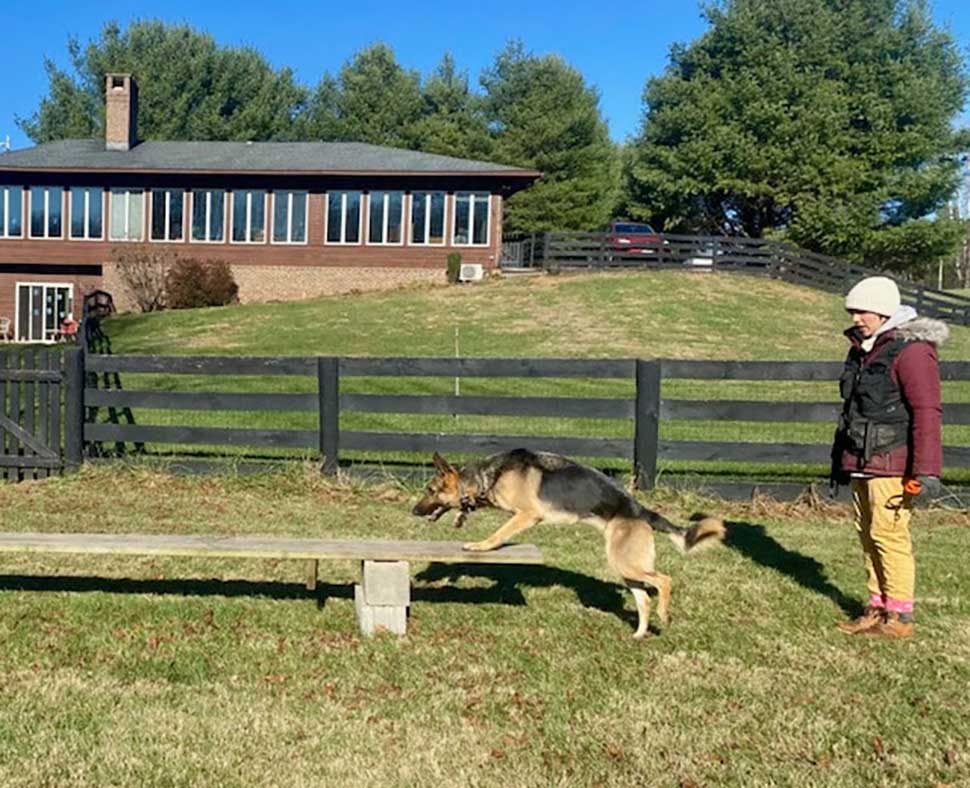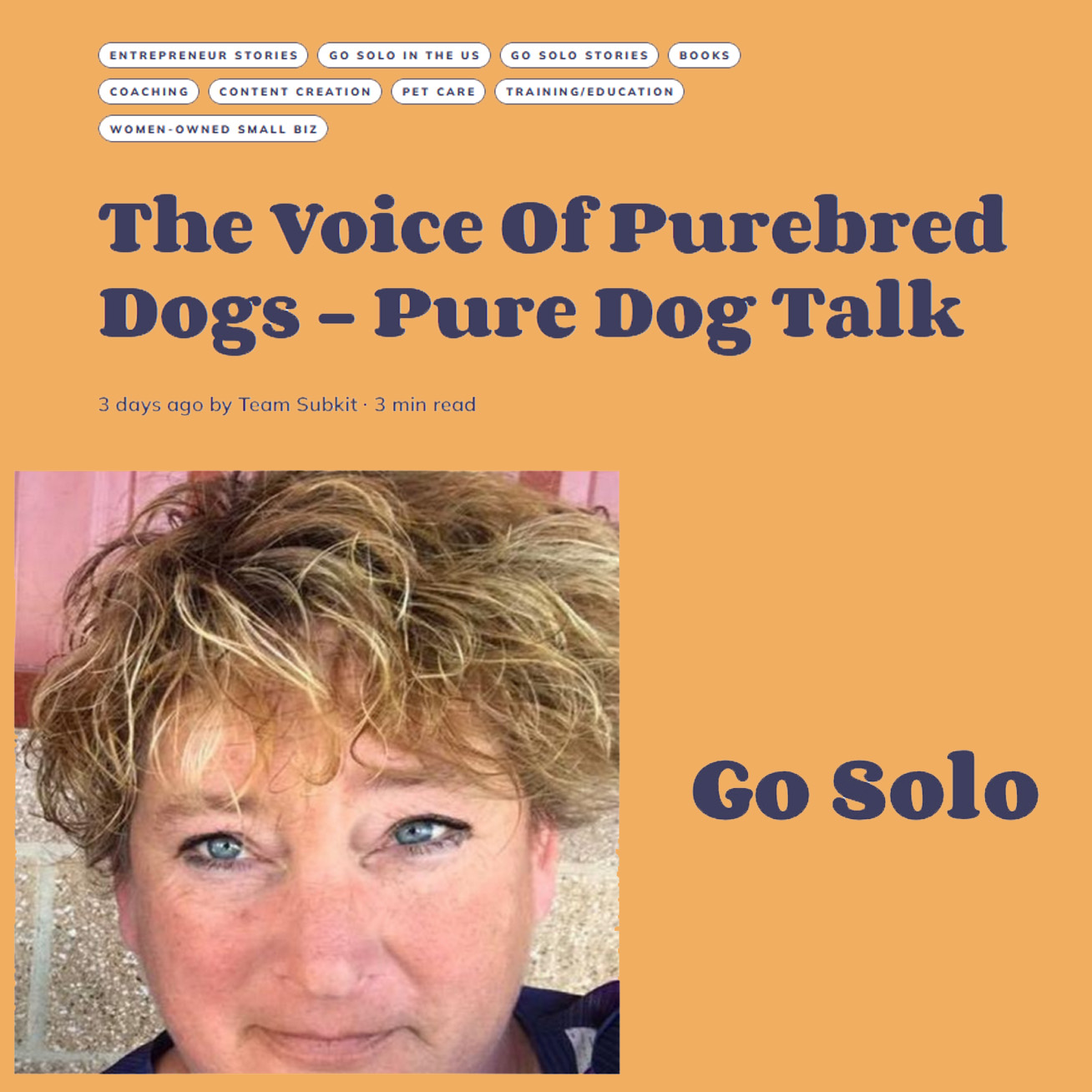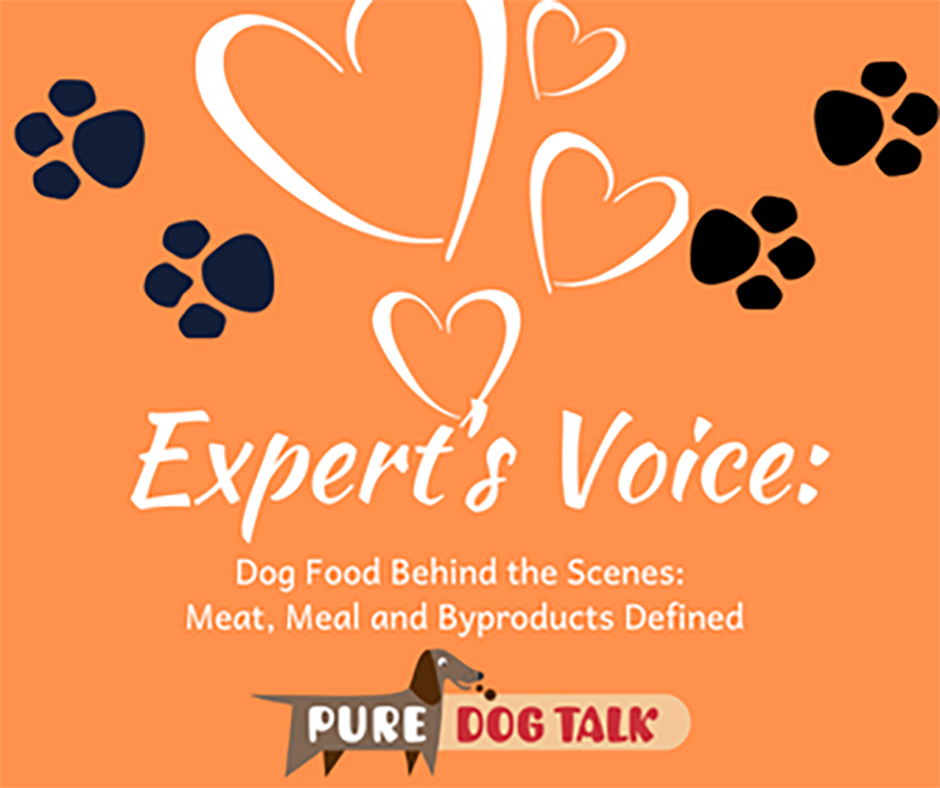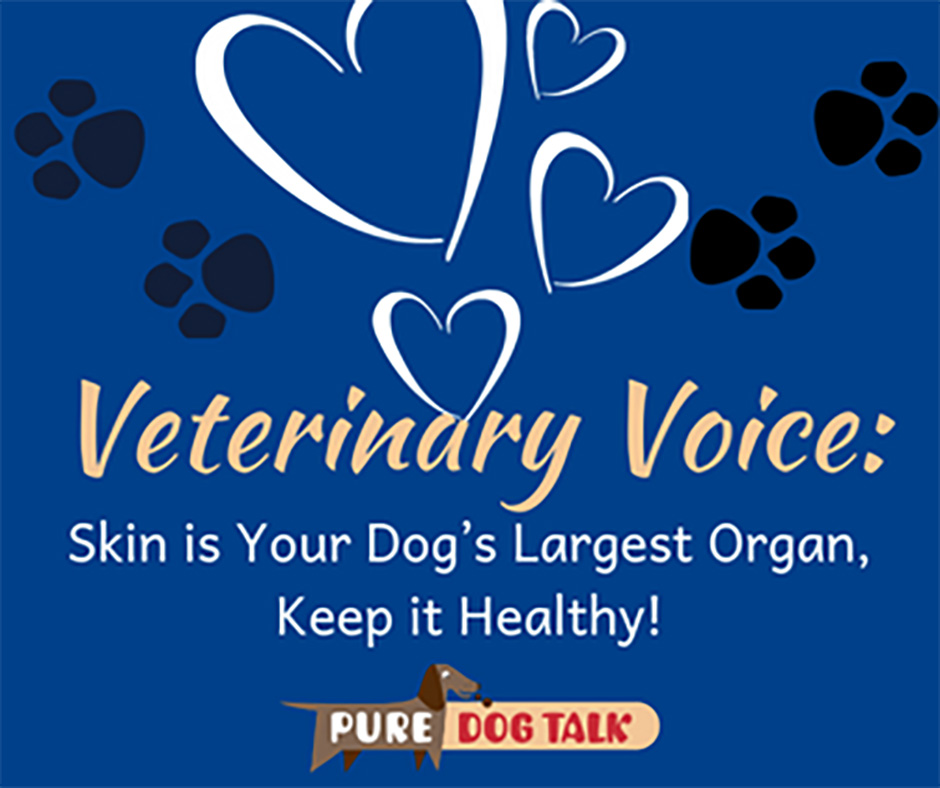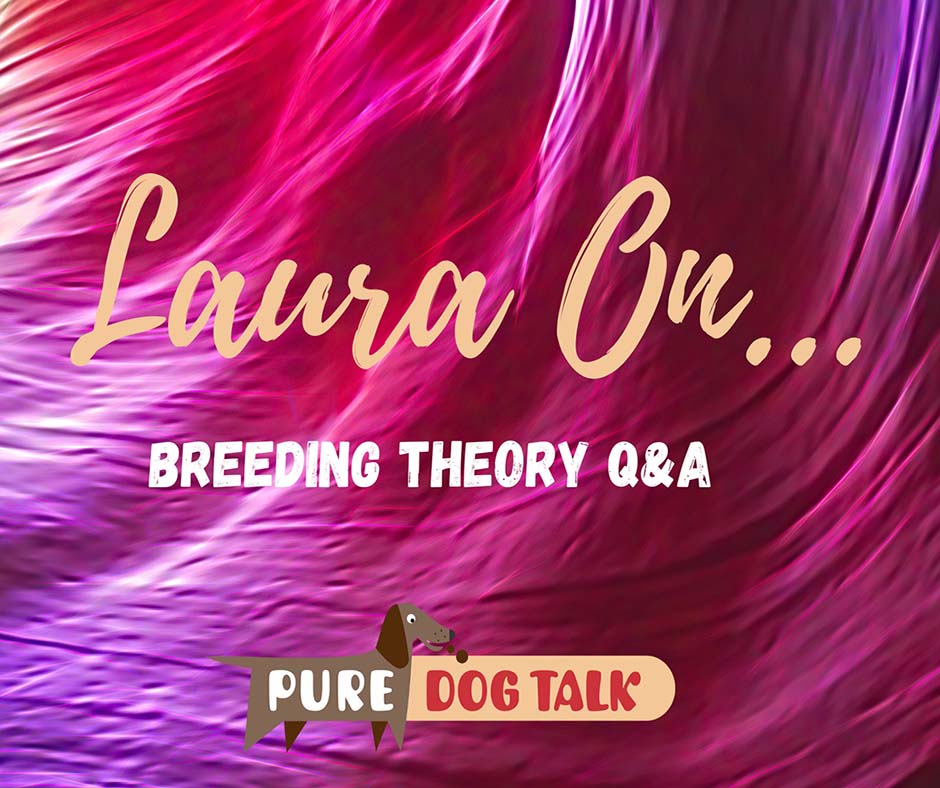Posts by Laura Reeves
578 — Temple Grandin to Headline NAIA Conference in Portland
Temple Grandin to headline NAIA Conference in Portland
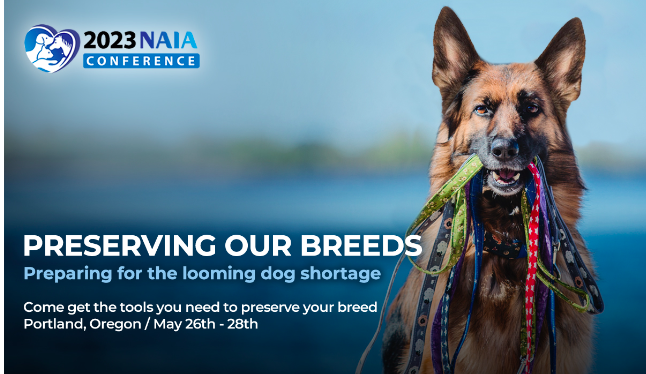 Patti Strand, founder of the National Animal Interest Alliance (NAIA) joins host Laura Reeves to discuss the lineup of speakers at the conference scheduled for May 26-28 in Portland, OR.
Patti Strand, founder of the National Animal Interest Alliance (NAIA) joins host Laura Reeves to discuss the lineup of speakers at the conference scheduled for May 26-28 in Portland, OR.
The annual NAIA conference kicks off under the banner “Preserving Our Breeds: Preparing for the looming dog shortage.” Strand shared her excitement about the keynote speaker, Temple Grandin, who has been actively involved in animal welfare for decades.
Strand said that Grandin’s most recent book “really speaks to me. It’s called ‘Visual Thinking, the hidden gifts of people who think in pictures, patterns and abstractions.’ And if you get into this book, she talks about different categories of work that people get into who have these gifts, and animal people are among them.”
Additional topics are focused on preserving our breeds, breeding healthy dogs and raising well-socialized puppies. Dr. Marty Greer, Carmen Battaglia and Dr. Claire Wiley will join the star-studded speakers panel.
“I could say the looming purebred dog shortage or the looming shortage of dogs that are deliberately bred rather than random bred or bred in countries that don’t have the same standards that we have,” Strand noted. “There always will be dogs available as long as there are street dogs in developing countries. We’re going to focus more on the deliberately bred dogs and talk about how we preserve them.
“The big part of the conference is dedicated to helping people breed better dogs, raise their dogs better. You know, the socialization pieces are all about that. The DNA piece, Marty coming in and talking about different aspects of reproduction.
“But again, in order to preserve their breed, a big part of that is breeding dogs. There are so many breeds today where you have a hundred or less dogs in the entire country. Not just 100 dogs that are intact, but just a hundred dogs of that particular breed. We need to encourage people to breed in a way that supports every aspect of animal welfare and so on, but breed dogs. It’s part of this preservation piece, you can’t preserve from if you don’t breed them.”
Remember to check out the NEW PDT Albums today!!
577 — Margery Good on the Deep Character of “Sillyham” Terriers
Margery Good on the Deep Character of Sealyham Terriers
Margery Good joins host Laura Reeves to share her deep love of her beloved Sealyham Terriers, breeding, grooming and the importance of learning.
Good started in obedience with a German Shepherd Dog.
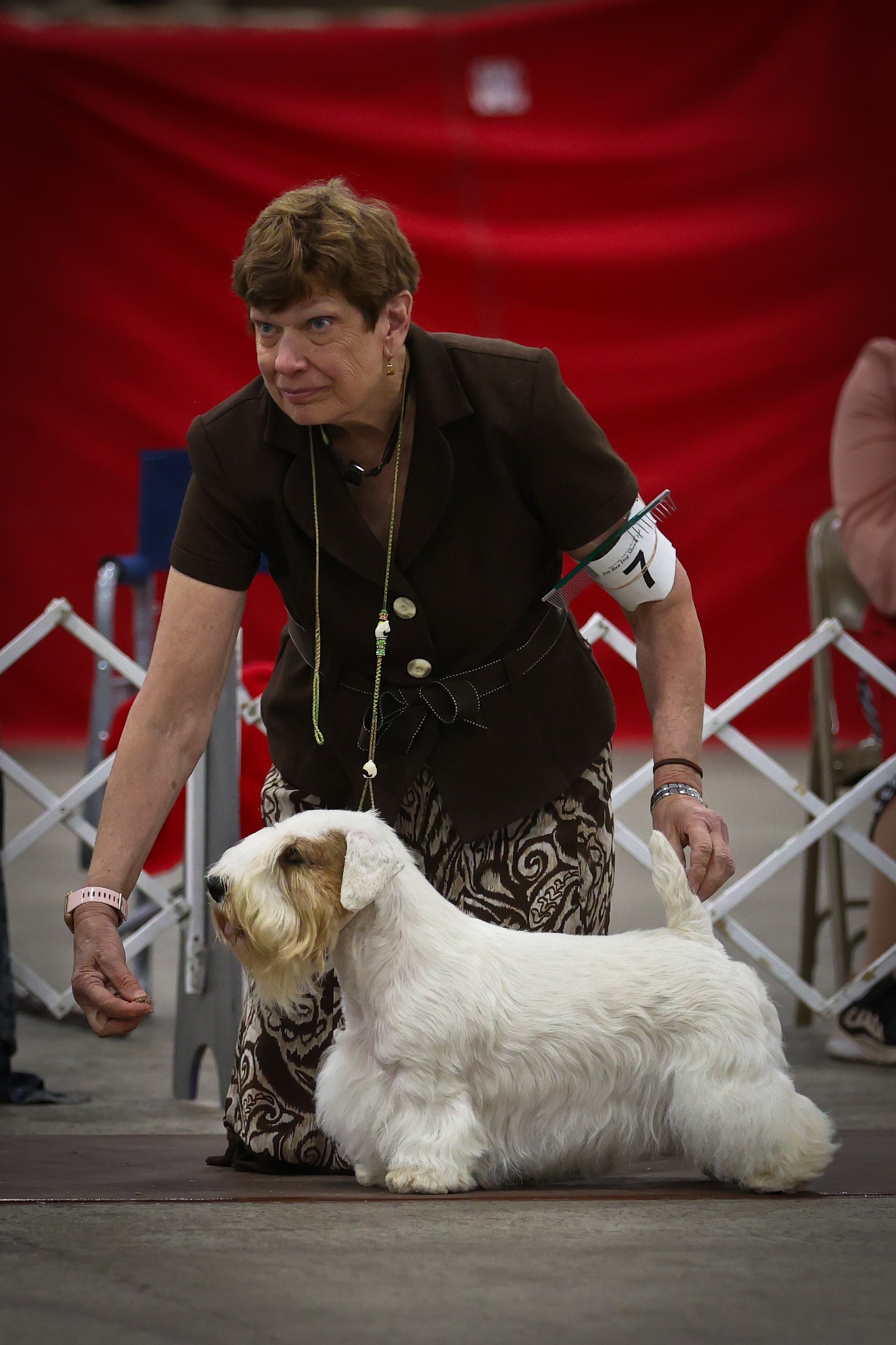
Margery Good with BIS/BISS CH Goodspice Efbe Money Stache
“I entered in obedience, but then I spent my day at the dog show stalking the handlers that were sharing their conformation dogs and trying to learn as much as I possibly could, without getting in their way. Peter Green, Bob and Jane Forsyth. Bill Trainor. People that were at the very top of their careers in those days, and I would spend as many hours as I could watching and trying to learn.
“Well, I watched a lot of their grooming at their setups and how they handled each dog on the tables and putting them on and off the table. how they brushed them, what direction they use or what tools they picked up. Except for the Forsyths, the handlers were only showing like 6-7 dogs in the show and they’d do some trimming the shows.
“So I’d watch how they tweak the trim before they take them in the ring. And then with like the Afghan hounds and Poodles I watched, how did they brush the hair? How did they pick up the hair they weren’t brushing so that they could get from their skin to the tip of the hair. So I picked up a lot of learning from observing how they prepared the dogs. And then I’d go and watch them actually showing the dog. I actually spent more time behind the scenes than by the rings.
Speaking to the challenge of trimming Sealys, Good said “I do try very hard to breed dogs with coats that normal groomers and average dog owners, if they apply themselves, they can work and have their successful finish to them. I also spend a lot of time helping people at shows or at my place or wherever I am to help them tidy up their trims and show them a new technique that they haven’t tried or encourage them to keep going until they get it right.
“Now that we have things like cell phones, I say take pictures, send me pictures, I will critique your trim. I work with people, they’re 12-15 hours away. If they send me pictures, I will help. And it works.
Sealyham Terriers – Generous, Big Dogs in Small Package
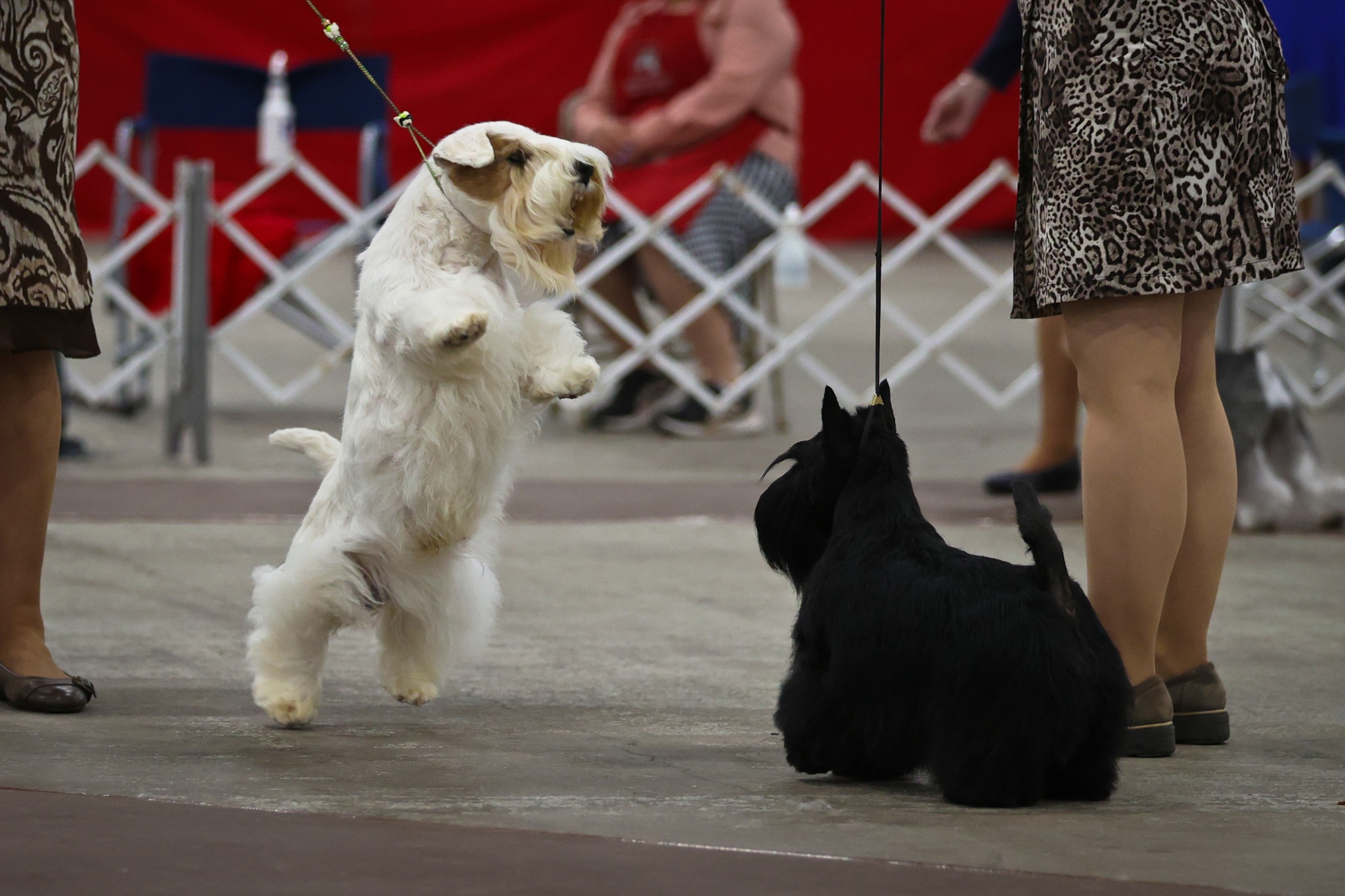
Stache sparring, showing the stand up character of the breed.
“They’re so generous. And all you need to do is ask and they will say what can I do for you. They’re very strong, sturdy, compact little dogs. They are big dogs just in a small package. They have very strong personalities. Their characters are very deep, as opposed to some of the other terrier breeds, whose characters are rather shallow. Which some people like. But it’s not for me. I like the depth of the character that I see in Sealyhams.
Classic Breeding Advice
“(Starting out) I was able to breed forward and not have a lot of faults that I had to breed away from. I had very good virtues to start with. In a breeding program, you need to concentrate virtues and minimize faults when you breed. So, you need to be able to see what a stud dog can give in virtues and what faults you might get and not double on what you have in your female. See what her strengths are and not double on the faults that they have. So, generation after generation, you do that. To the point of Stash, (GCHG CH Goodspice Efbe Money Stache, Terrier Group winner at the 2022 AKCNC) who’s the culmination of 50 years of my breeding.”
Listen to the entire conversation full of passion, insight and charm.
576 – Kent Boyles and Liz Oster on Breeding Plans and Growing the Sport
Kent Boyles and Liz Oster on Breeding Plans and Growing the Sport
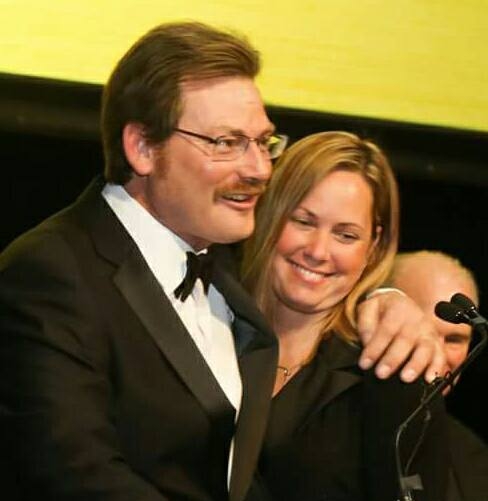
Kent Boyles and Liz Oster share the spotlight.
Kent Boyles and Liz Oster of Kenlyn and Marquis German Shepherd Dogs join host Laura Reeves from the International Kennel Club of Chicago shows to share their thoughts on breeding decisions and how to grow the sport of purebred dogs.
Boyles and Oster, 2018 AKC Breeders of the Year, are the owners and handlers of Rumor, GCH Lockenhaus’ Rumor Has It V Kenlyn, BIS at Westminster Kennel Club in 2017, #1 dog all breeds in 2016 and winner of 104 All Breed Best in Show awards.
Boyles piloted GCH CH Kaleef’s Mercedes to win the AKC National Championship Herding group in 2022.
Boyles started working for German Shepherd breeders at 16, as soon as he could get his driver’s license. Oster was born into the breed and raised with them as her parents participated in obedience and later developed their breeding program.
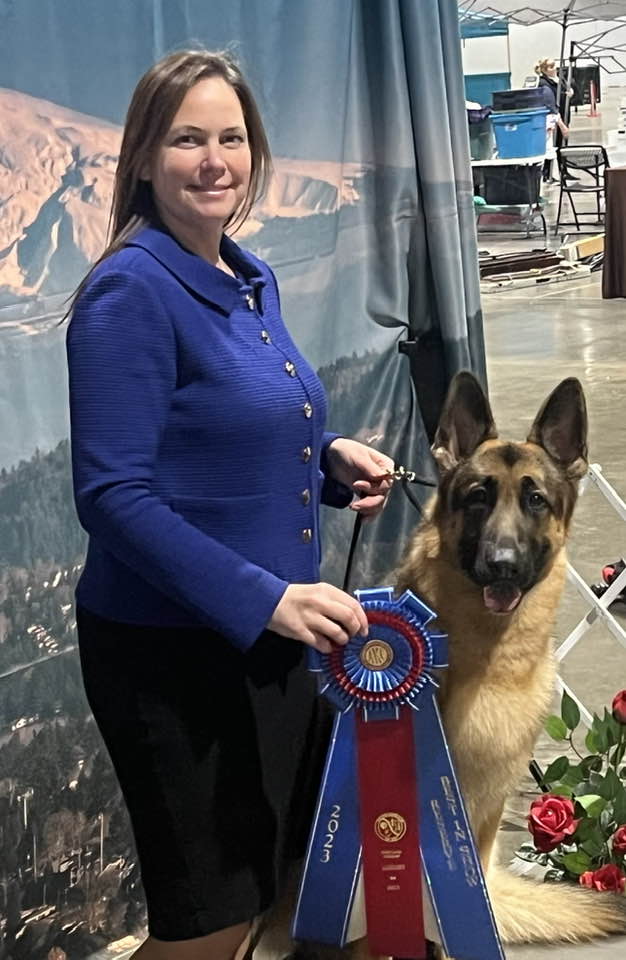
Liz Oster and Mercedes winning RBIS at Rose City Classic dog shows.
“I think (dog shows) need to be more of a family deal,” Oster said.. Like my mom would drag all five of us kids to the dog show. My brothers weren’t really into the dog show, but my sister and I were. And so we would show the dogs. They’d go and play and do whatever at the park or wherever we were. And I mean, everybody helped at home and stuff.
“And I think exhibitors need to be more open and friendly to spectators at the dog shows. I mean, even this weekend, exhibitors are kind of like, ‘oh, I can’t get through.’ Well, if we didn’t have these people coming here, they would not buy a purebred German shepherd…”
“I think that’s key,” Boyles added. “You see somebody with a little bit of interest, Jesus, I mean help them.”
“Some of these German shepherd clubs, just the way things have evolved, they’ve kind of gotten away from the obedience end of things,” Boyles observed. “And some of the working aspects of the breed. With our breed, German Shepherds, the reason almost all new people come and buy a German Shepherd, believe me, is not to go to a dog show and watch it go around in a circle at an AKC dog show.
“They wanna get it because of the reputation that the dog has for being a good, sound family guardian. They want it to look over their home, take care of things … it’s got the lure of the police dog type stuff … as far as it being a working dog. So a lot of times people get carried away with … the only criteria that you would have to select and keep a dog is just because of its anatomical features and not what’s going on inside that dog’s head, and the paying attention to the health and the strength and the fundamentals of what’s in that dog’s mind, … it gets to be a little bit problematic.
“I think sometimes people use the word aloofness as a little bit of an excuse to have (the dogs) be a little edgy and not so accepting, so to speak. I mean, to me, like aloof means it doesn’t need to just indiscriminately like everybody, you know? It’s just like I can take you or leave, , but it’s still supposed to be sound minded and comfortable and confident in the surroundings that it’s in.
“…One of the things that we always try to keep in mind is we’re not going to do this breeding today just to try to get a show winner. You’ve got a concept in mind as to what that animal is supposed to ultimately be like, how you’re going to get there, but then what step you’re going to take three generations down the road. Where are you gonna go with that? You have to continue on.”
575 – Ears: Yeast, Bacteria and Dr. Greer’s Mind-Blowing Tip for Hair Removal
Ears: Yeast, Bacteria and Dr. Greer’s Mind-Blowing Tip for Hair Removal
Dr. Marty Greer, DVM joins host Laura Reeves for important information on maintaining healthy ears in our dogs, diagnosing and treating ear infections and her *mind-blowing* tip for hair removal from the ear canal.
“Ears are complicated,” Greer said. “It’s not just go pick up a tube of Panalog and you’re going to fix the whole problem. It is not that simple. I wish it were. Everybody wishes it were. Clients don’t understand why we have these chronic, recurrent, never-ending problems.
“Ears can be as simple as … the puppy got some water in its ears. It was out in the rain, playing around, rolled in the snow, had a good time, came in, got a little water in the ear, got an ear infection. However, a lot of dogs have these chronic, recurrent, never-ending ear infections. They can be bacterial, they can be yeast, they can be a combination, they can be allergic and some dogs just have itchy ears.
“Our dogs should not have ear wax in their ears. Cats should not have ear wax in their ears. Children should. Ferrets should. Dogs and cats should not have ear wax. So anytime you see discharge in the ears, if you put a Q-tip or a Kleenex in and you wipe out something that’s yellow, brown, icky. If you get stuff out, your dog needs to go see the vet. There’s a problem.
Pro Tip
“Don’t mess with a healthy ear. If your dog doesn’t have a problem with its ears, don’t start cleaning it. Don’t start putting stuff in the ear canal if there’s nothing wrong with it. If it ain’t broke, don’t fix it because you’ve now taken an environment that was healthy and you’ve changed it, so don’t put something in the ear unless you need to.
Mind Blown…
“You can pluck hair on the ears (to help keep a drier environment). I think it sets up inflammatory changes …You’re ripping hair out of the hair follicles. A lot of people don’t know, and I learned this at a meeting. So, this is not Marty Greer going off the rails. This is actually from a dermatologist. You can put Nair in the ear canal and get rid of the hair. You wanna make sure that the ear drum’s intact of course. And I usually use the one with aloe.
“I’m careful when I do it. I usually put it down with a Q-tip. I don’t wanna push a big squirt out of the bottle and into the ear and then have the dog shake its head. Because if you lose an eyebrow as your dog shook its head and then Nair flew out in your face, I am not responsible for this.
“All the hair doesn’t come out on the first treatment. It takes a couple of times to do it. I put it down in the ear canal. I give it about 10 minutes and then I’ll go in with the Q-tip and just kind of spin the Q-tip and the hair starts to just lift out. It’s really cool.”
Listen to the full episode for more excellent information on healthy ears for our dogs.
574 – Kelly Shupp on Campaigns, Rare Breeds and Generational Change
Kelly Shupp on Campaigns, Rare Breeds and Generational Change
Kelly Shupp, Professional Handler, joins host Laura Reeves for a deeply insightful conversation about running a show campaign, the challenges of competing with rare breeds and the generational change happening in her circle.

Kelly grew up with German Wirehaired Pointers bred under the Mountain View prefix.
Shupp grew up with purebred dogs owned by her mom, AKC judge Claire Wisch Abraham. Starting with Chesapeake Bay Retrievers and transitioning early to German Wirehaired Pointers, the mother-daughter team competed in shows, field events and obedience.
In 2012, Phil Booth showed their homebred GWP Oakley, GCH CH Mt. View’s Ripsnortersilvercharm, owned by Victor Malzoni, to #1 All Breeds.
Shupp was mentored by top professional handlers in the US and Brazil, including Booth, Damara Bolte, Angela Lloyd and Jane Myers, before launching her full-time handling career. In 2022, she showed the Spinone Italiano Josie, GCHG CH Collina D’Oro Solo Un Bacio, to a record- breaking career, capped with winning the Sporting Group at the AKC National Championship.
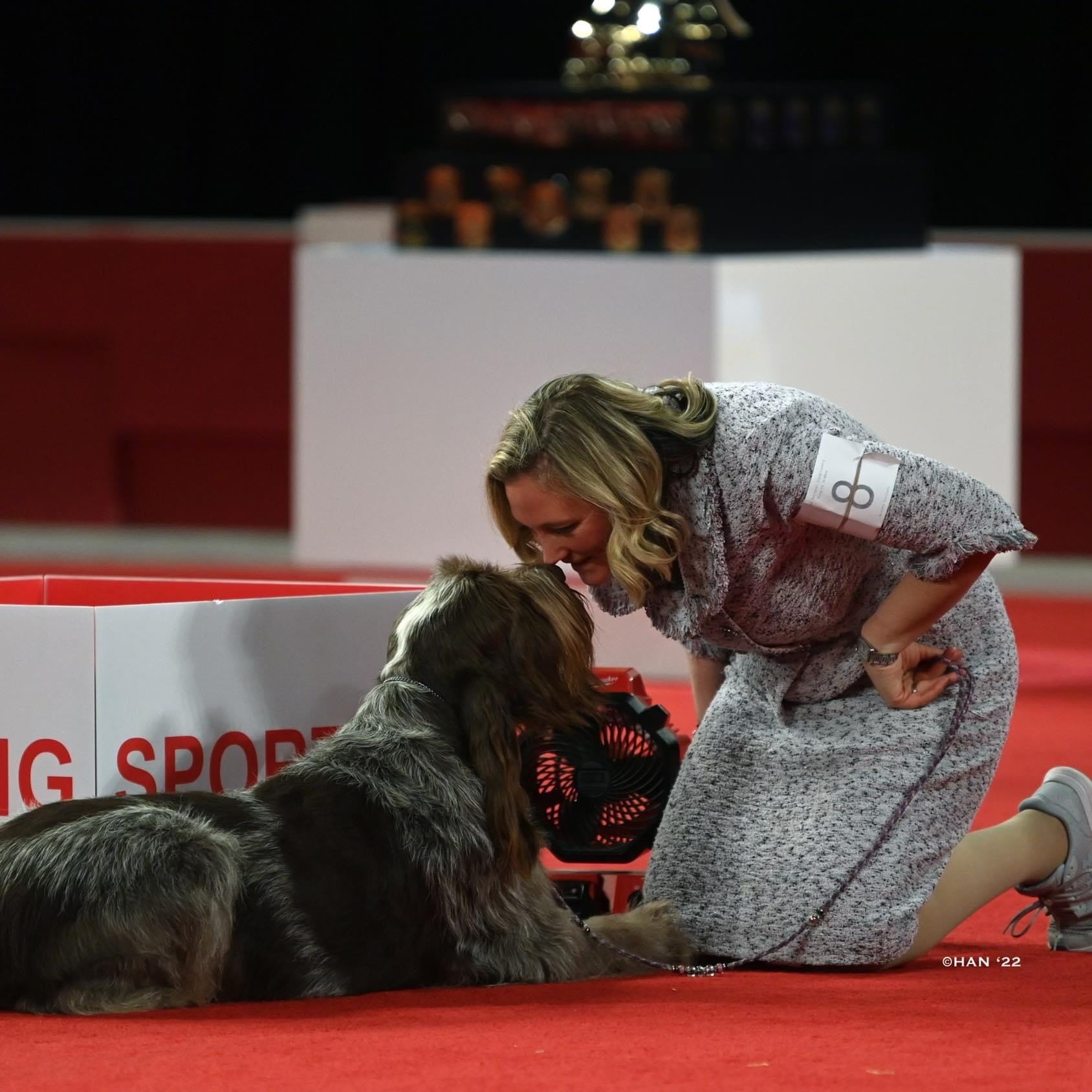
Kelly and Josie share a special bond.
“It is a special thing to run a rare breed,” Shupp said. “They’re not always in the placements. There’s judges that will point to rare breeds and judges that won’t. It’s a game. We learn certain chess pieces that fit and ones that don’t. With a rare breed they’re very specific (pieces) for sure.”
Generational change is taking over in the handling ranks, Shupp noted.
“This year we had so many young people in the group ranking competitions,” Shupp said. “Blake and Arial in the terrier group, me and Joanne in the sporting group.”
Planning a campaign includes evaluating a budget, competition and geographical location.
“The conversation I typically have with a client the start of the year is you go hard through March, see how it goes. Are you placing a lot in groups? Winning 75% of your breeds? You see if you can start placing more.
“You never go into a year saying I’m going to be #1 sporting dog. You see how it goes. Those are things you don’t really say. Those high-end top dog races just kind of happen.”
Flashback episode on planning a campaign.
More pro tips:
- Ask the right questions to find the right handler for you.
- Have those sounding boards to talk about judges and shows with experience-based knowledge.
- You can’t be better if the people around you don’t want to help you be better.
- Know your standard. Know about the breed you’re presenting. It’s such an important part of our job. To be an ambassador for the breed. To honor the breed.
- Flip flops are deadly….
- Everything happens for a reason.
- The greats never stop learning.
573 – Search and Rescue Titling Events Come to US
Search and Rescue Titling Events Come to US
Melissa Stagnaro, vice president of the American Rettungshunde Sport Association (ARSA), joins host Laura Reeves to share details of the growing Search and Rescue Sport titling events in the US.

Dog working in an ARSA test.
“ARSA started out of a need for some standardizations,” Stagnaro said. “There was an earthquake and flooding in Armenia in the late 1980s and a lot of kind-hearted people showed up to help and it was hard to ascertain what their skill level was. This included search and rescue dog handler teams, but it also included EMT’s and nurses and people like that. And so sometimes the well-intentioned helpers caused a little more trouble than help.
“So the United Nations worked with the FCI and out of this came an International Rescue dog organization. And so the rule book that we’re using is standard across the globe. Most countries, other than the US, use this as their basis for their local community SAR teams.”
ARSA offers these tests as a way for people to do titling events that could, if they stick with it and find their dog has the aptitude and they have the aptitude, take them to the point that they could do full on search and rescue missions.
“There’s three sport levels that get progressively more difficult, and there’s a fourth mission ready level,” Stagnaro said. “So the mission ready, if you and your dog were to complete it successfully, you would be a real search and rescue team certified by the FCI rulebooks. The three other levels are just sport.
“There’s a lot of search and rescue community-based groups in the US and also sheriff’s departments who would be more interested in accepting a volunteer that already has the skills. In the US we have many certifications for search and rescue teams, but if you came to them and said, hey look, my dog already has these skills, then they would have an easier time assessing you. None of the sport skills are in conflict with real search and rescue.”
The ARSA 2023 Championship is March 31 – April 1 in Leesburg, VA.
Listen in to the full episode for more details on this fun new sport.
Team Subkit: The Voice Of Purebred Dogs | Pure Dog Talk
Thanks to Team Subkit for the invite. Interested in starting your own entrepreneurial journey in dogs but unsure what to expect? Then read up on our interview with Laura Reeves,…
Read Full Post572 – Dog Food Behind the Scenes: Meat, Meal and Byproducts Defined
Dog Food Behind the Scenes: Meat, Meal and Byproducts Defined
Rob Downey, nutritionist, researcher and CEO of Annamaet dogfood company, joins host Laura Reeves for a deep dive on what ingredients lists on our dog food labels mean.
“We have to back up a little bit and look at what those statements mean and where definitions come from,” Downey said. “That really comes from AAFCO. You’ll see on the package whether it be canned, frozen or whatever. AAFCO is Association of American Feed Control Officials. They don’t regulate pet foods. What they do is they set up the guidelines. And then the regulation goes through the FDA and the Department of Agriculture in most states. So AAFCO is actually a volunteer organization. Each person gets a vote, and you have to be on one of these bodies. So each state has the ability to regulate how they view it. And the sad part is, those regulations are open to the interpretation of each state official. So, every state has a feed control official. And as a pet food manufacturer, for me to sell in each state, I have to be approved by that state. So, you have to send your labels in to each individual state.
“They are the ones that determine the terminology that we’re allowed to use. And so, for example, fresh meat. If the meat you use has been frozen at any time, it’s no longer considered fresh. So as a manufacturer, I wouldn’t trust shipping non-frozen meat. What I call fresh meat, I want frozen and I’ll thaw it when I want to use it, but then I can’t attach the word fresh to it.
“Then you get into the term meal, and meal is actually a processing term where you take raw meat, and it’s heated up, moisture is removed, a lot of the fats removed and it becomes a powder and then that’s how it shipped as a meal. And then that’s also called a rendered ingredient. AAFCO is pretty strict about rendered. Anytime you change the physical component or whatever, you heat it up or you do this or do that now, it becomes a rendered product. So even in the food chain, like for instance my local meat store, if they make a sausage? If it was in the pet industry, that would be considered rendered
And the other thing that is kind of interesting, the term meal isn’t used in most parts of the world. Like if I use chicken meal, somebody in Europe, they don’t have the term meal. They would call it dehydrated chicken or simply chicken.
“Now the advantage of using a meal, is that basically the moisture has been removed. So, if I’m ordering chicken meal, a truckload, it’s only going to be 10% moisture. I’m ordering fresh chicken, a truckload is going to be 70% water, only 30% dry matter. But when you read the label. On the ingredient list, it’s according to wet weight, so it includes all that water. That’s why when you see a fresh meat formula or a meat formula, there’s always seems to be more meat ingredients, because there’s so much water. Of course, when you’re doing an extruded product that all gets kicked out.
“So chicken meal is basically skin, muscle and no internal organs. Like you can’t have organ meat in it, you can have some bone in it. But when you go to byproduct meal, that’s when the organ meat gets involved.”
Mind Blown…
When the label gives the minimum percentages of the contents (30/20 protein and fat, for example), it doesn’t have to specify the maximum, which can vary drastically from the minimum! Listen in for more insider details.
571 – Skin is Your Dog’s Largest Organ, Keep it Healthy!
Skin is Your Dog’s Largest Organ, Keep it Healthy!
Dr. Marty Greer, DVM joins host Laura Reeves for a deep dive on skin problems in our dogs, how to avoid them, what causes them and how to treat them.
Pro Tip? An ounce of prevention is worth a pound of cure.
In previous episodes, Marty and Laura discuss allergies and external parasites, but today’s topic covers hot spots, seasonal alopecia, demodex and other skin disorders.
“The skin, believe it or not, is the largest organ of the body,” Greer noted. “So, it accounts for an important part of our dog’s health and it accounts for a huge number of visits. A lot of people have noticed skin problems in their dog. In fact, at some point, almost every dog will have something wrong with their skin during their lifetime. So, the better prepared you are to deal with it, the better off you are.
Hot Spots are a Hot Topic
“Our typical response to a hot spot, as a veterinarian, is to grab the clippers and shave it. And so that makes it a bit of a challenge for us to try and manage these because a hot spot needs to be treated similar to a wildfire out of the forest — you have to clear cut it. So, you have to clip out around it so that you’re an inch or two out around the hotspot into normal skin to effectively stop the spread of it. And so this is where the show dog people totally freak out because that’s that’s a year’s worth of hair coat. For some dogs that never grows back the same way.
“And this is where having a good veterinary relationship really comes into play. Your veterinarian is gonna be a lot more sympathetic to your needs and expectations if you have developed that relationship.
“It’s not that we’re unsympathetic to it, it’s just that we have to balance what your needs are with the dogs health and so that’s where this challenge comes in.
“It’s usually (caused by) a break in the skin of some kind, whether it’s an insect bite or they ran into the fence or you know, something that just dinged the skin. Allergies. Anything that causes a break in the normal integrity of the skin then allows bacteria to develop. The official name for it is an acute superficial bacterial pyoderma. It’s called a hot spot because it is hot, man. I mean, those things can spread … I’ve seen them double in size in 24 hours if you don’t get it addressed.
“You want to keep your dog healthy, their skin healthy. You want to keep them from matting. You want to be careful when you comb them or brush them that you’re not breaking the skin. That you reduce their exposure to biting insects because that can initiate it, and if they do have allergies, that you get a handle on those.
“Use your shampoos and conditioners carefully. Dilute your shampoo, rinse, rinse, rinse some more. Don’t leave any residue. You know, just be smart about how you’re taking care of your dog’s coat because if the coat is important to you, then treat it as if it’s important to you.”
Listen to the full episode to learn more on the topic of skin disorders.
570 — Breeding Theory Q&A From LIVE@5
Breeding Theory Q&A From LIVE@5
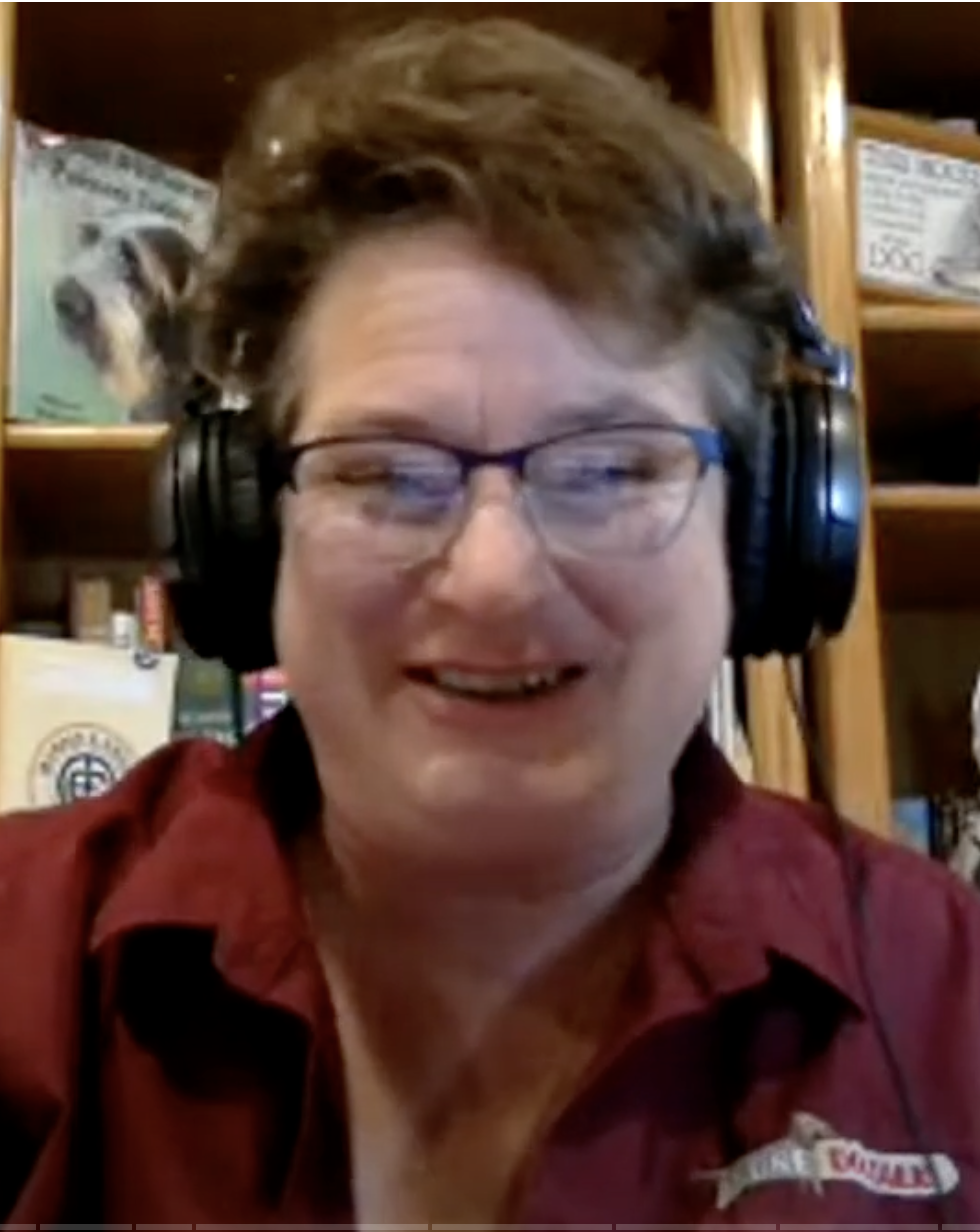 Host Laura Reeves leads a conversation on breeding theory, replayed from a LIVE@5 live podcast from 2022.
Host Laura Reeves leads a conversation on breeding theory, replayed from a LIVE@5 live podcast from 2022.
“As we all know, dog breeding is something of, to put it mildly, a passion project,” Reeves said. “Doing it well is something we all strive for. There are some tools that we can use to accomplish that goal. No matter what type of breeding program we have, we can all use these same tools to achieve success. Sort of the theory side of breeding, reading pedigrees, breeding concepts and health testing.
“Coefficient of inbreeding is frequently shortened to COI. One of the great things is if you test both the sire and the dam of your litter, you will be able to get a predicted genetic COI based on the actual DNA. Then if you DNA test each of the puppies in your litter, you will be able to get an exact genetic DNA coefficient of inbreeding that will tell you exactly (what each puppy is). I think one of the things that many of us find sort of mind blowning is that puppies in a litter do not all have the same COI. They don’t all have the same genetics.
“And so when I did a half brother, half sister, a straight up inbreeding that I’d been planning for quite some time, and I knew what the pedigree COI was, I knew what the estimated or expected genetics COI was going to be, and I Embarked each of the 13 puppies and the actual COI in each of those puppies varied by as much as ten basis points.
“So, it’s really, really important to look at some of the tools that are now available to us. Dog breeding has always been a little bit of art and a little bit of science. Science is coming to the forefront and I don’t want us to lose the art, but I want us to be able to make good use of the science.
“Pedigree, genetic and actual COI is a very, very useful tool in our breeding program as we’re going forward. Purebred is a level of inbreeding. That’s what makes it purebred. Having a higher or lower level and how you use that and the healthy genes that you’re doubling up on or the unhealthy genes that you’re doubling up on make any enormous difference in your breeding program going forward.”
Listen in as Laura and her listeners interact on important topics from breeding theories, health testing and more.
Remember that LIVE@5 live podcasts drop on the Pure Dog Talk Facebook page the first Tuesday of every month! Join us there on March 7 for a conversation on GROOMING!
You can get more on this topic at the Dog Breeding 101 seminar.


